MLB The Show 21: the first multi-platform PlayStation Studios title tested
PS5, Xbox Series X/S, PS4 Pro and Xbox One X under the microscope.
'Sony Interactive Entertainment presents'. We've all seen that splash screen, the white type on the black background transitioning into a polished branding sequence, culminating in the familiar cross/square/triangle/circle iconography - only this time it's not just manifesting on a PlayStation game, it's also happening on Xbox. All of them in fact, from Xbox One to Xbox Series X. This is MLB The Show 21, the first multi-platform release from PlayStation Studios. I've played the game across three Xbox machines and two PlayStations and the results are fascinating.
Quite how we've reached this situation is something we can only really speculate about, but it's likely that Major League Baseball itself - the publisher - opted to move the franchise into the multi-platform arena. It's also likely it's the same outfit that brokered the deal to bring MLB The Show 21 to Game Pass on day one, which not only makes this title an unlikely battle of the consoles but also a stark contrast in the business models that Sony and Microsoft have opted for. From my perspective, MLB The Show 21 was available to download on any of my Microsoft consoles and it was just there as part of my subscription - a couple of button presses to download as I was good to go. Meanwhile, on the PlayStation side, I had to pay £75 for the cross-gen version of the game. Yes, remarkably, there's a £15 price-premium for buying the SKU that allows access to both PS4 and PS5 versions of the game. In terms of value, Game Pass clearly comes out on top - particularly when this is very much a cross-gen game with only relatively minor upgrades separating PS4 Pro and PlayStation 5.
MLB The Show 21 is a classic modern sports game in many respects. It doesn't feature the kind of smoothed-off filmic look of today's renderers - it aims for a pin-sharp, pristine presentation, with highly detailed character models bathed in effective, impressive post-processing. That's in the cutscenes - or the 'presentations' as the game calls them. Actual gameplay is more spartan, but still suitably impressive. PlayStation 5 and Series X render proceedings at native 2160p resolution and barring some very minor differences (a slight difference in select filtering? An odd water rendering bug in one scene on Series X?) they are basically identical. For Xbox Series S, resolution drops to 1080p and there is some evidence that perhaps some textures resolve at a lower detail level. But similar to most modern sports titles, parity is the key here in terms of the overall look and feel of the game.
 MLB The Show 21 - PlayStation Studios' First Multi-Plat Game - PS5 vs Xbox Series X|S, Pro vs One X!
MLB The Show 21 - PlayStation Studios' First Multi-Plat Game - PS5 vs Xbox Series X|S, Pro vs One X!
What is curious is how the PlayStation 4 Pro and Xbox One X renditions stack up. They're very clearly cut from the same cloth as their more modern counterparts. By default, resolution is lower (1440p out of the box) and some of the post-processing isn't quite as precise. Performance isn't quite so good, but it turns out that the last-gen enhanced machines possess something their next generation counterparts do not - in-game selectable resolution. Users can opt for 1080p, 1440p or even 2160p. It's the kind of option that actually would have been nice to have on the newer machines too, but is mysteriously absent.
Performance? Well, let's remember that this is a PlayStation Studios title and what is presumably their first stab at a multi-platform release. All versions run with an unlocked frame-rate, capped only by v-sync at 60fps. Actual in-game action runs nigh-on locked at 60fps on PlayStation 5, and it's much the same on Series X - just a little less stable. However, it's in the games cutscenes (or 'presentations' rather) that San Diego Studio pushes graphics much harder. Frame-rate buckles on all machines and it's here that we see that Series X occasionally matches PS5, but more often drops harder - by a factor of around 9-11fps. Series S at 1080p operates much the same as Series X, sometimes a little smoother but more often than not, 2-3fps slower. In terms of the new consoles then, the overall pecking order is pretty clear and fairly predictable, I'd say, when you're looking at a studio transitioning from single format development to multi-platform for the first time.
It's when we look at the last-gen enhanced machines that we see the positions reverse but perhaps the Xbox One X advantage you'd expect to see over PlayStation 4 Pro isn't as pronounced as you would expect bearing in mind the specs differential. Visuals look to be nigh-on identical and the resolution is matched at 1440p in the 'out of the box' balanced setting. Again, the differential can shift according to content but in the most challenging 'presentations', Xbox One X runs around 5-7fps faster than PS4 Pro. The difference compared to the new consoles is that the gameplay segments render consistently lower than 60fps. Mid 50s plays late 40s with a clear Xbox One X advantage. A leveller is available though: the options do allow you to drop resolution to 1080p, giving a result that looks very similar indeed to Xbox Series S - and perhaps even a little more consistent in the pitching and batting scenes. That's the closest you're going to get to a more consistent 60fps on these systems.




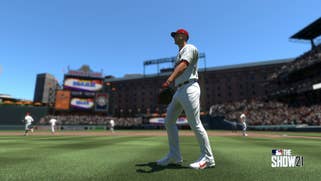
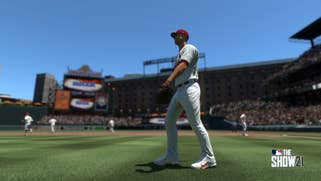



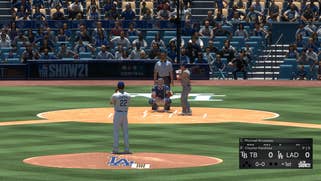


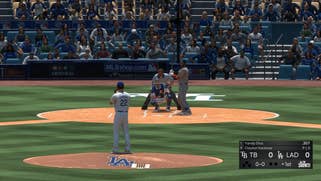


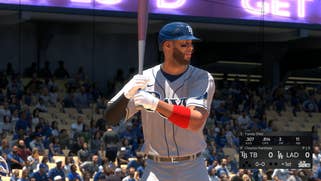
I can well believe that the conspiracy theorists will be full-throated in pointing out performance differentials between PS5 and Xbox Series X that are somewhat at odds with the technical specification of the consoles, but the fact that Xbox One X gives a smoother ride than PS4 Pro hopefully underscores that San Diego Studio gave the Xbox ports a good shot. Remember, its engine was developed on PlayStation hardware and when it comes to Series consoles, we're still very early on in the generation - and development tools are immature, especially on the Microsoft side. PlayStation 5 does have sparing DualSense controller support which is not matched on Xbox, while loading times are faster: a game loaded in eight seconds on PS5 up against 12 seconds on Series X. Initial boot times are also very swift on PS5 but only incrementally faster on Series consoles, when stacked up against PS4 Pro. 3D Audio is also mooted for PS5, but the game sounds fine on all machines.
It's a fascinating, if not overly exciting face-off when it comes to the game code, but the battle of the console business models is where the sparks really fly. I'm not a baseball fan so can't really comment on the quality of the simulation but it's a no-brainer that Game Pass will see the title more widely played - if you've got the sub, you have nothing to lose by sampling it whether you're a die-hard fan of the sport or not. Microsoft is certainly marketing it heavily, awareness is high and the novelty of playing a PlayStation game on an Xbox console will be compelling. Meanwhile, on the PlayStation side, this is a full-price game with arguably niche appeal - certainly outside of the USA - and no real sampling mechanism. Charging £60 for the product certainly won't convince anyone who isn't deeply invested in the game to give it a go. Meanwhile, charging a premium for a PS4/PS5 double-pack sits uneasily with me when this is the epitome of a cross-platform development.
A PlayStation Studios game on a Microsoft console though? It's weird and strange, akin to the kind of logic paradox so beloved of Captain Kirk in his various attempts to shut down megalomaniacal supercomputers in 60s Star Trek. How we got to this situation is likely down to a curious and unique series of events and perhaps MLB will be one of a kind, but my takeaway here is that it's not really specs or technology that separates Sony and Microsoft. It's the business models and the software and I'll be fascinated to see how this generation progresses.




